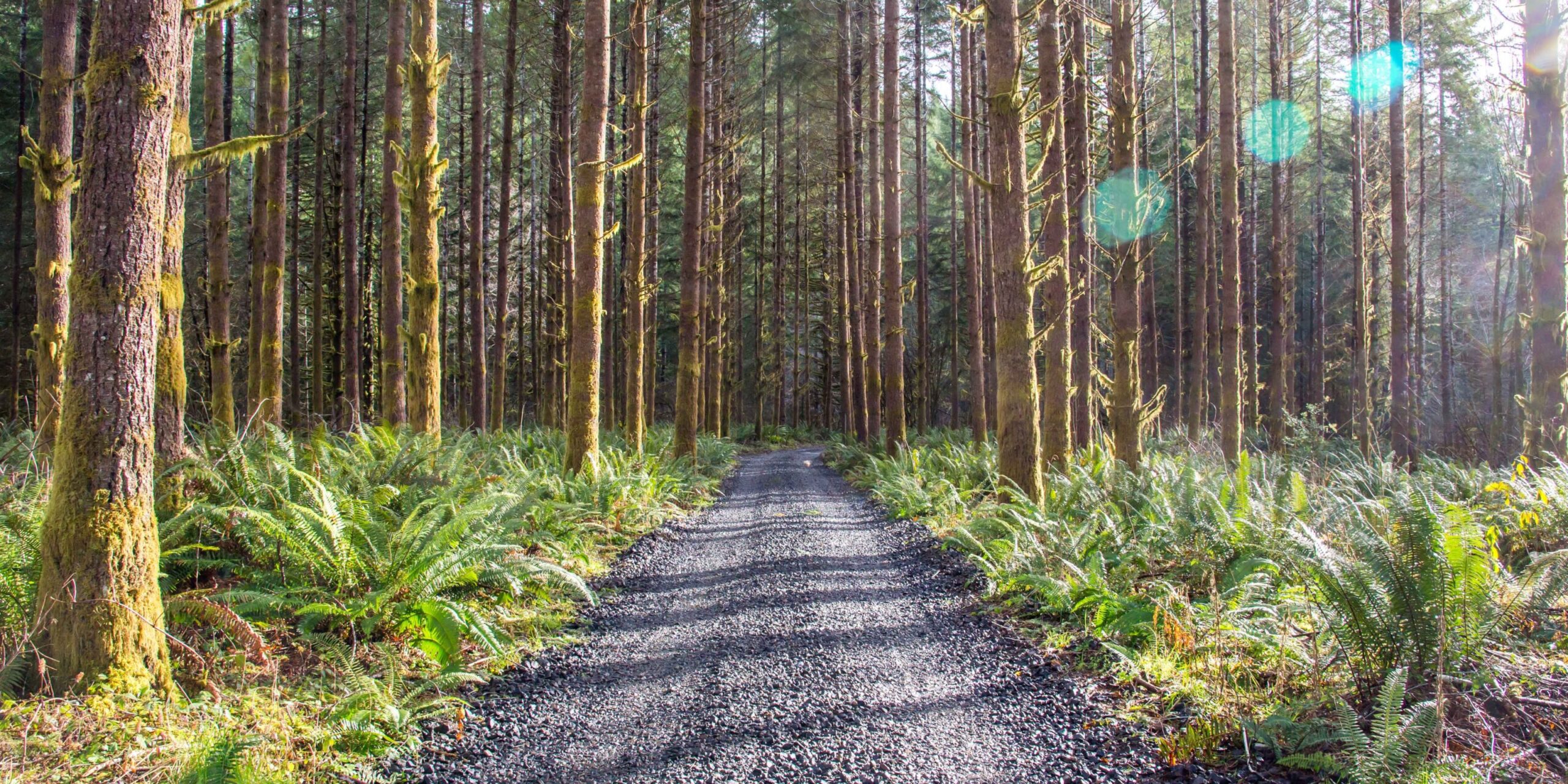
Work. Play. Renew.
Exploring Oregon’s Coastal Trees: A Guide to Coastal Forests
The state of Oregon boasts some of the most unique biomes on the planet, with over 30 million acres of forest and 65 native tree species. In particular, Oregon coastal trees are adapted to their environment in a way that’s unlike anything else you’ll find in the country.
The individuals and organizations that make up Oregon Forests Forever share a passion for the environment and the native trees that make our beautiful state what it is. In this article, we’ll focus on the coastal forests: what you can find there, what makes them special and, of course, how you can visit.
What Life Is Like on the Oregon Coast
Life along the Oregon coast must adapt to a variety of conditions in order to survive. The proximity to the ocean combined with a generally temperate climate leads to an area with mild temperatures and particularly wet winters. While the human inhabitants may not always be thrilled by the frequent rain, the plant life absolutely depends on it, and the ready availability of water allows a wide range of species to thrive.
Due to the humid air that circulates across the coast, Oregon also frequently experiences a blanketing of fog, which provides even more moisture for plant life while also helping plants retain the moisture they already have. On the coast, winds transport salty sea air in between and around the trees. This salt is harmful to most plants, as it can be corrosive to their cellular structures. As a consequence, plants that grow along the coast have been forced to adapt to the salty environment.
How the Trees Adapt
In the introduction to this article, we mentioned that Oregon is covered by over 30 million acres of forest land. However, all that forest doesn’t consist of just one biome but rather a vast ecosystem that is made of many smaller, interconnected habitats. Each one of these individual communities of plant life is referred to as a “forest stand,” and each one differs slightly depending on the local climate.
In a coastal or near-coastal climate, the plant life must adapt to all the salt in the atmosphere. Consequently, Oregon coastal trees have built up a hefty salt tolerance, enabling them to survive in conditions that would erode the bark of their nearby relatives. There are several ways that they can do this, including developing thicker bark than they would if they were growing in a more inland habitat.
These trees also have adapted root systems, which are often shallower to reflect the increased amount of moisture they pull from the air as a result of the continuously foggy conditions.
The Unique Species That Call the Oregon Coast Home
Most Oregon coastal trees are not found in Oregon alone but, rather, inhabit similar climates all up and down the Pacific Northwest. This usually includes reaching from the southern regions of Alaska to as far south as the coast of Northern California. there are a few of the most common coastal species you’ll encounter when you visit the great state of Oregon (or our immediate neighbors):
Sitka Spruce
An evergreen tree that can easily reach heights of 300 feet or more, the Sitka spruce is particularly well adapted to the salty air of the Oregon coast. In fact, the tree prefers a climate with a high mineral content, and it is rarely found more than 50 miles from the ocean.
The Sitka spruce can be recognized by its short needles and long, narrow cones. The trunk is often wide, and the tree serves as an important habitat for a wide variety of bird life, including the American bald eagle.
Douglas-fir
The Douglas-fir is one of the most famed conifer trees in the world, owing mainly to its popularity as a lumber tree and its ubiquity during the Christmas season. Another tree that can clear a few hundred feet in height without too much difficulty, the Douglas-fir can be recognized by its long, thin needles and distinctive gray bark.
Due to the unique structures of its trunk and bark, the Douglas-fir is one of the most fire-resistant trees to dot the Oregon coast. This helps the forest recover more quickly after a wildfire has occurred by providing a habitat for native wildlife.
Coast Redwood
The coast redwood is one of the largest trees on earth, with the tallest members of the species growing to well over three hundred feet in height. The tree is able to achieve these staggering heights due to the fog that blankets the Pacific Northwest; this allows it to capture and retain water it would not otherwise be able to.
Coast redwoods can be identified by their thick red bark, rounded cones and flat leaves. Many animals, including deer, bears and other mammals, depend on this tree to provide food and habitat.
Visit a Coastal Forest in Oregon Today
If you live near or have any plans to visit the Oregon coast, chances are you have a forest nearby that you can access easily. There are national parks, state parks and private property that are all packed full of Oregon coastal trees. You will need to research in advance who owns or manages the forest you are planning to visit so that you can be informed as to the requirements for entry.
One forest you should consider visiting is the Siuslaw National Forest, which is located near Corvallis. This forest encompasses all the trees we’ve mentioned, as well as plenty of other life in the area. Other popular choices are Ecola State Park and Fort Stevens State Park.
If you want to learn more about the local forests or to get involved with their conservation, consider joining Oregon Forests Forever today.